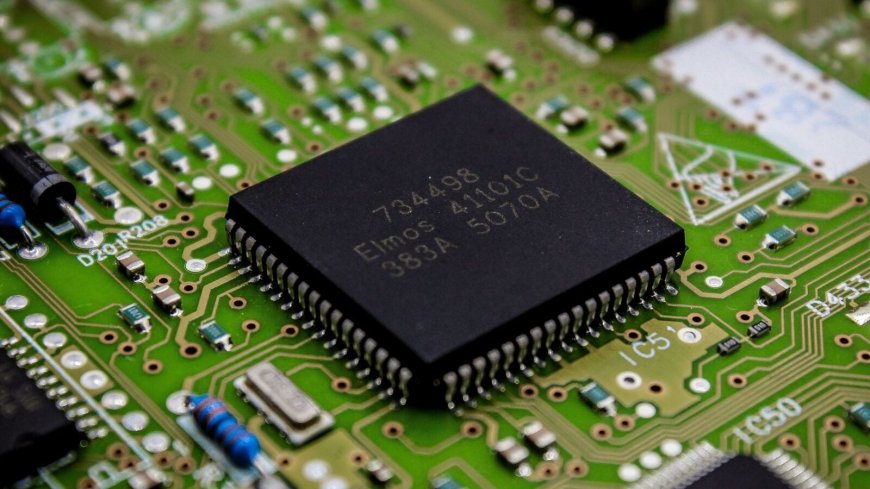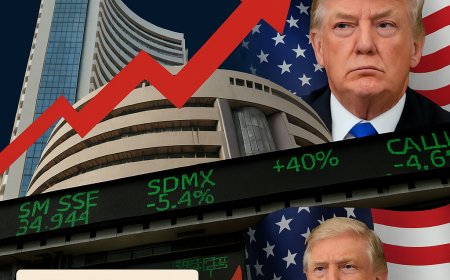Nvidia, Chip Stocks Have Soared — What Should Investors Do Now?
Nvidia and semiconductor stocks have seen sharp rallies in 2024. Explore whether it's time to buy, hold, or book profits with expert insights and market outlook.

The semiconductor space is basking in the limelight once again, and leading the charge is Nvidia — the trillion-dollar AI giant whose meteoric rise has fueled an explosive rally across the entire chip sector. As of July 2025, Nvidia’s stock is up nearly 70% year-to-date after an already monumental performance in 2023. Alongside Nvidia, other chip stocks like Advanced Micro Devices (AMD), Broadcom, and Taiwan Semiconductor Manufacturing Company (TSMC) have posted substantial gains, buoyed by soaring demand for AI infrastructure.
But with valuations climbing and investor exuberance running high, a pressing question now faces market participants: Should you hold, buy more, or take profits?
The AI Engine Behind the Chip Rally
Much of the semiconductor sector's rally is directly tied to the booming adoption of generative AI. Nvidia's graphics processing units (GPUs), especially the H100 and upcoming B100 series, are the backbone of AI training and inference workloads across data centers worldwide.
“Demand for Nvidia’s chips continues to exceed supply,” said Dan Ives, Managing Director at Wedbush Securities. “The AI arms race among tech giants like Microsoft, Google, Meta, and Amazon is creating a multi-year tailwind for chipmakers.”
Nvidia reported blockbuster earnings in May 2025, with revenue surging 85% year-over-year and net profit more than doubling. CEO Jensen Huang described this as the dawn of a “new industrial revolution driven by AI.”
Other chipmakers are benefiting as well. TSMC, the world’s leading contract chip manufacturer, has seen rising demand for 3nm and AI-specific chips, while AMD is making inroads with its MI300 series, targeting Nvidia’s dominance in data centers.
Valuation Concerns Mount
Despite the euphoria, analysts and portfolio managers are increasingly wary of overheating valuations. Nvidia, now trading at over 40 times forward earnings, has become one of the most expensive large-cap stocks in the S&P 500.
“Growth is undoubtedly strong, but expectations have become sky-high,” said Lori Calvasina, Head of U.S. Equity Strategy at RBC Capital Markets. “It would not take much of a miss — in guidance or delivery — for the stock to re-rate downward.”
Similarly, Broadcom, which recently completed the $61 billion acquisition of VMware, has surged over 40% this year. But its PE ratio has expanded significantly, sparking concerns about whether future cash flows can justify the price.
Market Context: Sector Rotation and Macroeconomic Winds
The rally in chip stocks is part of a broader tech resurgence. With the Federal Reserve signaling potential rate cuts in late 2025, growth stocks — especially in AI, cloud, and automation — are once again in favor.
However, this rotation carries risks. Should inflation prove stickier than expected, or if geopolitical tensions flare up (particularly involving Taiwan), semiconductor supply chains and investor sentiment could take a hit.
“In the short term, chip stocks are riding a wave of AI optimism,” said Savita Subramanian, Head of U.S. Equity Strategy at Bank of America. “But markets are forward-looking. A lot of good news is already priced in.”
Analyst Recommendations: Time to Rebalance?
The consensus among most analysts is that while Nvidia and other leading chip stocks still have upside potential, the risk-reward ratio has become more nuanced.
Buy-and-hold investors who have enjoyed significant gains might consider trimming positions to lock in profits and reallocate to undervalued sectors.
New investors are advised to wait for a pullback or invest through diversified vehicles like semiconductor ETFs (e.g., SOXX or SMH), which offer broader exposure and reduce stock-specific risk.
"Semiconductors are essential to everything from AI to electric vehicles," said Gene Munster, Managing Partner at Deepwater Asset Management. "But it's critical to enter at the right valuation. Chasing momentum can backfire."
Retail Investor Takeaway: Stay Grounded, Think Long-Term
If you’re a retail investor who bought Nvidia or chip stocks early, congratulations — your portfolio has likely outperformed. But now is a good time to revisit your investment goals and risk tolerance.
-
Consider rebalancing if one stock has grown disproportionately large in your portfolio.
-
Diversify into emerging themes such as edge AI, custom silicon, and cybersecurity.
-
Don’t panic sell, but also avoid the fear of missing out (FOMO) trap.
Long-term demand for semiconductors remains robust, driven by trends in AI, automotive, industrial automation, and quantum computing. However, volatility is likely to rise as the market calibrates expectations with actual earnings growth.
The Bottom Line
Nvidia and other chip stocks have delivered stunning returns, driven by real innovation and AI-fueled demand. But after such an extended run-up, investors should be cautious rather than euphoric.
"Great companies can still be poor investments if bought at the wrong price," said Morgan Stanley’s equity strategist Adam Jonas. "Focus on fundamentals and don’t lose sight of valuation."
The semiconductor sector still holds promise for the next decade. But from here, careful stock selection, disciplined rebalancing, and a long-term mindset are key to navigating the next phase of this chip-powered bull run.
What's Your Reaction?
 Like
0
Like
0
 Dislike
0
Dislike
0
 Love
0
Love
0
 Funny
0
Funny
0
 Angry
0
Angry
0
 Sad
0
Sad
0
 Wow
0
Wow
0













































































